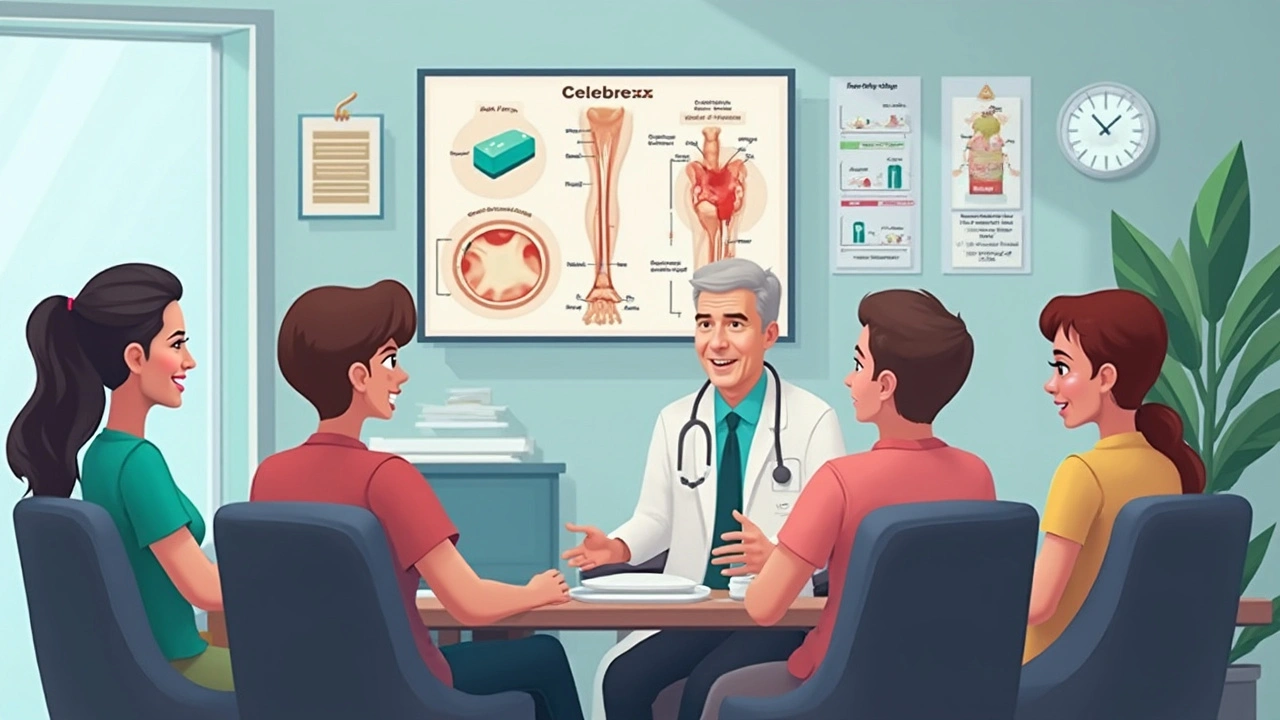If you’ve ever taken a pill for a sore head, sore muscles, or a painful joint, chances are you used an NSAID. NSAID stands for non‑steroidal anti‑inflammatory drug. In plain words, they block chemicals in your body that cause pain and swelling. That’s why you hear names like ibuprofen, naproxen, or diclofenac (the ingredient in Voltaren) everywhere.
These drugs work fast, often within an hour, and they’re available over the counter or by prescription. Because they reduce inflammation, they’re a go‑to for headaches, menstrual cramps, back pain, arthritis, and even fever. But like any medicine, NSAIDs have pros and cons, and using them the right way matters.
Here are the most popular NSAIDs you’ll see on a pharmacy shelf:
Ibuprofen (Advil, Motrin) – Good for mild to moderate pain, fever, and short‑term inflammation. Most adults take 200‑400 mg every 4‑6 hours.
Naproxen (Aleve) – Lasts longer than ibuprofen, so you can take it twice a day. It’s a solid option for joint pain.
Aspirin – Besides pain relief, low‑dose aspirin helps prevent heart attacks when your doctor recommends it.
Diclofenac (Voltaren Gel or tablets) – Comes as a gel you rub on the skin or as a tablet. The gel is popular for localized knee or hand pain because it stays where you apply it.
Each of these drugs follows the same basic rule: they lower the production of prostaglandins, the chemicals that make you feel pain and cause swelling. If you need quick relief for a sudden ache, an NSAID is usually the fastest fix.
Even though NSAIDs are common, they can cause trouble if you ignore a few safety tips. First, never exceed the daily dose listed on the label. More isn’t better—it just raises the risk of stomach ulcers, bleeding, or kidney problems.
Take NSAIDs with food or milk. That simple step can protect your stomach lining from irritation. If you have a history of ulcers, heart disease, or kidney issues, talk to a doctor before starting any NSAID.
Avoid mixing NSAIDs with alcohol. Alcohol also irritates the stomach, so together they can cause serious bleeding. Also, don’t combine two different NSAIDs at the same time; the effects add up and so do the risks.
Watch the timing. If you’re using an NSAID gel like Voltaren, apply a thin layer to clean, dry skin and wash your hands afterward. Don’t cover the area with a bandage unless a doctor says it’s okay.
Finally, keep an eye on side effects. If you notice stomach pain, black stools, sudden weight gain, or swelling in your ankles, stop the medication and seek medical help.
By following these basics, you can get the pain relief you need without unwanted problems. Remember, NSAIDs are tools—not magic cures. Pair them with rest, ice, or gentle movement for the best results.
We hope this quick guide clears up what NSAIDs do, which ones might fit your needs, and how to use them safely. When in doubt, a quick chat with your pharmacist or doctor can save you a lot of hassle down the road.

Celebrex (celecoxib) is a well-known prescription medication for managing pain and inflammation, especially for people with arthritis. This detailed guide explains what Celebrex does, how it compares to other NSAIDs, its pros and cons, and practical tips to use it safely. Find out facts you don’t see on a typical label, honest advice, and what to expect if you’re considering Celebrex for chronic pain or joint issues.